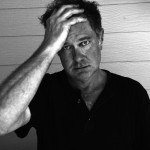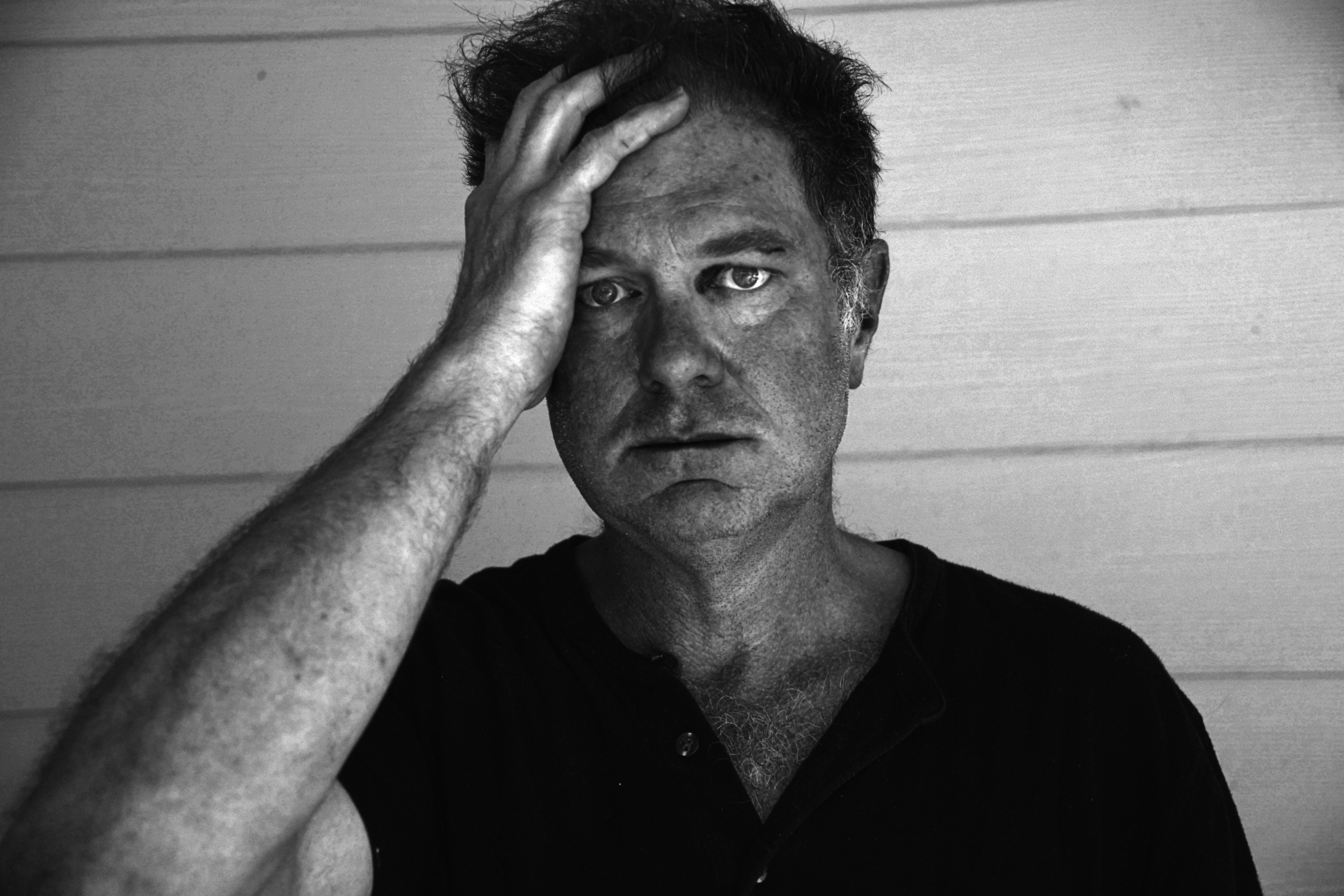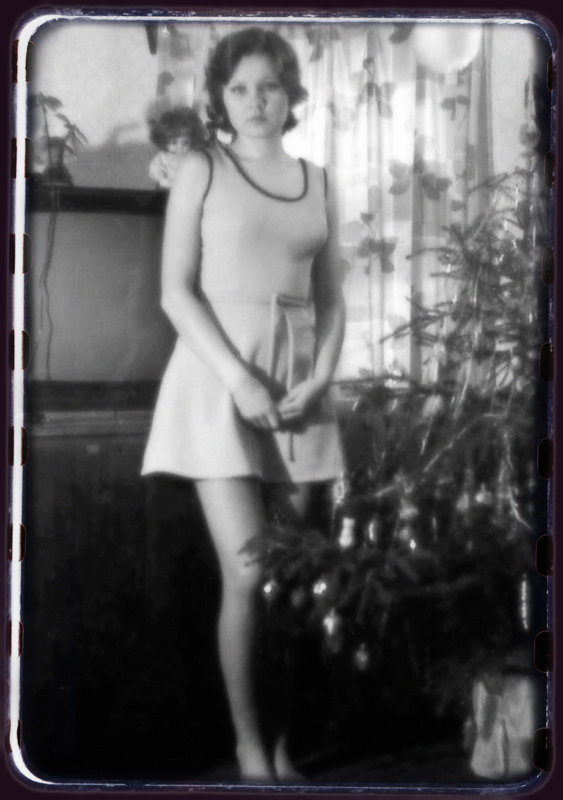 ‘I rust things’ – with this succinct and rather pointed phrase, Jim Haynes describes his (not only) musical approach. The American has been working with sound, images and, most recently, videos for decades. In all these media, he investigates the characteristics of corrosion. Musically, this can be done in a minimalist, reduced manner, for example on ‘The Decline Effect’, but can also be more brutal, as the recently released album ‘Inconsequential’ shows. On his label The Helen Scarsdale Agency, which has been in existence for more than 20 years, Haynes releases his own work as well as that of other artists who operate in the broad field of what Haynes himself describes as ‘a particular thread of post-industrial research, surrealist collage, refined minimalism, caustic electro-acoustics, sublimated dream-pop, obfuscated field recordings, recombinant noise, existential vacancy, and then some’.
‘I rust things’ – with this succinct and rather pointed phrase, Jim Haynes describes his (not only) musical approach. The American has been working with sound, images and, most recently, videos for decades. In all these media, he investigates the characteristics of corrosion. Musically, this can be done in a minimalist, reduced manner, for example on ‘The Decline Effect’, but can also be more brutal, as the recently released album ‘Inconsequential’ shows. On his label The Helen Scarsdale Agency, which has been in existence for more than 20 years, Haynes releases his own work as well as that of other artists who operate in the broad field of what Haynes himself describes as ‘a particular thread of post-industrial research, surrealist collage, refined minimalism, caustic electro-acoustics, sublimated dream-pop, obfuscated field recordings, recombinant noise, existential vacancy, and then some’.
I think I first came across your work when I listened to “The Sleeping Moustache“.album many years ago The album was a collaboration with a number of others. At that time you had already released a number of albums. Could you give us a brief overview of how you started?
JH: The label started as an outlet for me to release my own work. By 2003, I had been working with Loren Chasse in a project called Coelacanth. It was inspirational to work with Loren, as he taught me a lot about contact microphones and the basics of ProTools and tape multi-tracking. The project sourced a lot of elemental material – rocks, sand, metal, raw electricity, feedback – and turned it all into something very dense, fluid, and subaquatic. We both had a lot of ideas, and he had plenty of other outlets through his very active involvement with Jewelled Antler, a robust collective of phonography / drone-folk musicians and projects that included Thuja, The Blithe Sons, and many others. And I was more interested in pushing towards something more austere, more psychological, and electric. So my first solo album was self-published through The Helen Scarsdale Agency back in 2003. Around this same time, I met Matt Waldron / irr. app. (ext.) and I reconnected with Sigtryggur Berg Sigmarsson from Stilluppsteypa, and the two of them proposed their early work on the label, which I still find exemplary. Those recordings being Ozeanische Gefühle and Vikinga Brennivin respectively.
You have said that you “rust things“ and there is the famous Neil Young quote that “rust never sleeps“. Is the notion of “decay(ing)“ central to your recordings (and your photographic work)?
JH: Yes. Corrosion has been a central focus for my work for a very long time. This began when I was an art student in college, working with burnt tar, broken glass, rusted metal in various assemblages. At the time, I was very much attracted to the aesthetics of decay, though many of these visual works could hardly been seen as successful. Rather they were pale comparisons to Anselm Keifer, Christian Boltanski, and Leonardo Drew. But this work put my on a path that later became focused almost wholly on sound. In 1997, I started working for Aquarius Records in San Francisco, and a colleague of mine posited the question: what is the sound of rust? I wanted to investigate gate that question, and I approached Loren Chasse to see if this could be realized. My initial inquest to was to see if we could actually hear anything on chemical level when steel and copper were being oxidized. Those initial experiments were not particularly interesting, but Loren and I began to work with tactile noises and aqueous tones from found objects and field recordings that were far more interesting and certainly adjacent to the idea of a corroded sound. That’s how Coelacanth began, and how i started working with sound. The parallels of sound and corrosion continue, but less focused on the chemical / alchemical tactility and more on the psychological / emotional response from the work that align with the conditions of disruption and dislocation.
If you were to recommend any recording from your vast body of work, what would you recommend to someone as an introduction to what you are doing?
JH: I think Insomnia is a very good recent album of mine. This came out in 2022 on Sentimental Productions out of Ukraine. The dynamics of that album are quite stark and at times brutal. Inauspicious (Helen Scarsdale, 2023) follows a similar path and compositional arc, but is more complex in the dissonance and harmonics.
How important would you say is the concept of an album and have you ever been in a situation where the initial concept was changed in the course of the recording process?
JH: The initial ideas and concepts almost always change, to the point where I hardly even find the initial ideas noteworthy. It’s far more interesting to hear where everything ends up, not where it began. There are a few albums in which I really tried to force a particular idea and mold the sounds to adhere to that idea. Those almost always fail. Similarly, if I try to compose something with something specific in mind, it usually falls flat. It’s far better to listen to what the material is doing, adapt the material to work in concert with other material, and be flexible. These are rules to live by in general, though I do very much appreciate the rhythms and rituals of daily life.
You are quoted as saying with regard to the “Inadvertent“-tape: “I don’t always want to know the origin of a sound when i start hammering it into shape. i do appreciate a sound to which i cannot reverse engineer its inception. “ Are there sometimes works where you find the origin of a sound of utmost importance?
JH: There are a source materials that do stand out for me. On Flammable Materials From Foreign Lands (2018, Elevator Bath), I repurposed an Estonian radio broadcast about the economic conditions of Europe, and the woman on air had a voice that was melancholy yet comforting. My attachment to that recording has to do with my connection with the emotions I felt from the sound of her voice, and not about the subject matter of the broadcast, especially given my virtually non-existent working knowledge of the Estonian language. So I broke up her voice into a constellation of phonemes, scattering them amidst a focused composition of shortwave radio tones, empty signals, and dark noise with their own set of metaphors of paranoia and alienation. There are times when I can listen back to an older piece and remember that this particular sound was made with strobe lights and coil pick-ups, or from a particular synth, or from a particular field recording from a specific place. But usually, that’s not the case. And I actually prefer to hear the sounds and the noises as pure phenomena, rich the potential for metaphor and allegory.
White Centipede Noise is just about to release “Inconsequential“. It says that “Inconsequential” is “Haynes consciously channeling the God of cold industrial, ANENZEPHALIA, and coming out on the other side with a totally sovereign statement on authoritarian dread.“ As that seems to be one of your most current works, could you say a few words about it?
JH: While this album is being released in 2024, it was mostly completed right before the pandemic started in 2020. The reasons for the delay are unnecessary for this conversation, and I did remix the albums at various points during those four years before Oskar graciously offered to release the album on White Centipede. Over the years, I’ve had the opportunity to share a bill and perform alongside some amazing artists, including Nurse With Wound, Ramleh, Tim Hecker, Alice Kemp, Anenzephalia, and many others. When each of these presented itself, I took the opportunity to push myself and my work, so I could hold my own, prove myself worth of accepting that gig, and certainly not embarrass myself. Both the Ramleh and the Anenzephalia gigs were really important milestones for me personally, as I felt I did accomplish what I set out to do. For the Anenzephalia gig, which was held in Oakland, California in the fall of 2018, I used a set of churning, very dark electronic patterns as the foundation for the set, adding the layers of noise from motors and broken electronics. I had been working somewhat in this vein through the albums in the mid 2010s, but all of this came into focus through this material. So, this album has more in common with something like When The Sky Burned (Sige, 2021), than albums such as Inauspicious (Helen Scarsdale, 2023) or Inadvertent (No Rent, 2024).
You once mentioned worries about the presidential election. I lived in the USA when Trump was elected, and I was watching the results unfolding in an alternative venue in Miami, which was called Titanic, (not only with the benefit of hindsight) a more than appropriate name. Would you say that there are moments when your music is political?
JH: When Trump got elected, I submitted my application to become a citizen to the Kingdom of Elgaland / Vargaland. KREV is an absurdist project for sure, but one that also embodies empathy, compassion, and humanity lost in most all political discourse. But as for specifics about my own work, yes, there are overt political references on When The Sky Burned, through the track Multiple Gunshots which ruminated on the epidemic of police brutality on the BIPOC population, directly related to the contemporary horror of Brianna Taylor’s murder as well as to the killing of Oscar Grant by police in Oakland over a decade prior. There is a strange bit of propaganda that I recorded via shortwave radio that is featured on Inconsequential, in which a robotic male voice warns in English of the power of Russian radio to control the masses. The peculiar wording of this transmission does not resemble the verbiage I’ve heard from confirmed US government transmissions, making me think it may be some sort of red herring broadcast by Russian agents. To me, it feels the work of somebody totally incompetent and failing to understand global context and even the basics of the human condition. This is far too common when it comes to disasters of hubris inflicted by any given government upon this planet and its inhabitants.
Do your surroundings (where you live, work etc.) influence your work?
JH: Yes. Before I moved to Oakland, I had worked in small spaces and studios that didn’t allow for really crushing the noise. There was a studio in San Francisco I shared with a bunch of oil painters, some of whom were extremely sensitive to noise. So I rarely did anything loud there, or I had to work on headphones. I didn’t think it impacted the work, but it certainly did. When I moved studios to NIMBY in East Oakland in 2013, I had the opportunity to make as much noise as I wanted. All of tenants rented a tractor trailer within this massive warehouse that also had a full woodshop and welding studios. A lot of the tenants were using those trailers to house all of the gear for the next Burning Man, and I was the only sound artist there, but nobody bothered me or complained if the volume increased. So, it got louder, more dynamic, and noisier. That continued when I moved out to the Sierra Mountains of California in 2017, where I have had a converted garage as my studio. It’s pretty insulated sonically from the rest of the house, so my wife rarely hears what I’m up to. As far as the psychological and psychic imprints of a space, this is also important, though less so for my actual working space and more so when I’m collecting environmental recordings in abandoned factories, derelict hospitals, ghost towns, and old gold mines.
In an interview you once mentioned that you wouldn’t like to perform behind a laptop. Many years ago David Knight (Shock Headed Peters, Arkkon) said to us in an interview if he was interested in watching people behind laptops, he would go into an office building. What role do live performances play? How you do you prepare for a performance? What sound sources and equipment do you utilze?
JH I wholeheartedly agree with David Knight, and I had made a pact with myself that I would never perform with a laptop. There can be backing material that gets used, but it’s played back usually on tape. I do use a sampler for triggering playback, but beyond that everything else is generated live through an array of motors, coil pick-ups, contact microphones, scrap metal, radio, and synths. The preparation is pretty lengthy for any new set as I would prefer to hit all of my cues properly as opposed to meandering aimlessly as an improvisor. Sure, there can be a detour I may want to take, but the impact of the performance is predicated on these extreme dynamics which require a lot of practice.
Has your writing (e.g. for The Wire) influenced your recordings?
JH: Writing has gotten me to listen to all sorts of music, not just experimental, avant-garde, and noise music. The process of writing engages with critical thinking that gets me to consider why I am having this particular reaction to this piece of music. I begin to consider what the intentions of the artist are and how those correlate to my own reactions. It’s parallel process to engaging with my own work critically: simply by asking myself the question “does this work?” and not being afraid to tell myself that something is a failure and trying to learn from failure. My inner critic has gotten me to be a better artist, a better writer, a better husband, a better human. It’s very true that I won’t improve if I don’t learn from my mistakes, no matter how much of a fuck-up I have been in my life.
On your bandcamp site you categorize the music you release on Helen Scarsdale as “post-industrial research, surrealist collage, refined minimalism, caustic electro-acoustics, sublimated dream-pop, obfuscated field recordings, recombinant noise, existential vacancy, and then some.“ Has there ever been a recording which you considered to be great but where you thought that it wouldn’t fit on the label?
JH: There hasn’t been anything I’ve turned down that has been a quality release. But I don’t accept unsolicited demos. Period. I’ve written very extensively on my demo policy on the Helen Scarsdale website. helenscarsdale.com/about.htm
Given the volatile situation of music, of small(er) labels, what keeps you going?
JH: Yes, it very much is a volatile arena for all of these small labels fighting to get the attention for an audience inundated by the incessant torrent of nostalgia driven reissues. I’ve worked in the industry since 1994, and so much has changed. There was a time when the back catalogue and second pressings was how you could really turn a decent profit. Nowadays, most of the Helen Scarsdale releases barely break even, some generate a small amount of income and royalties to the artists, some considerably less so. I certainly don’t do it for the money, or else I would have quit a long time ago. It always has been about working with artists who I respect, and doing the best job I can to get the material out in the world. That’s harder than it looks.
Interview: MG
